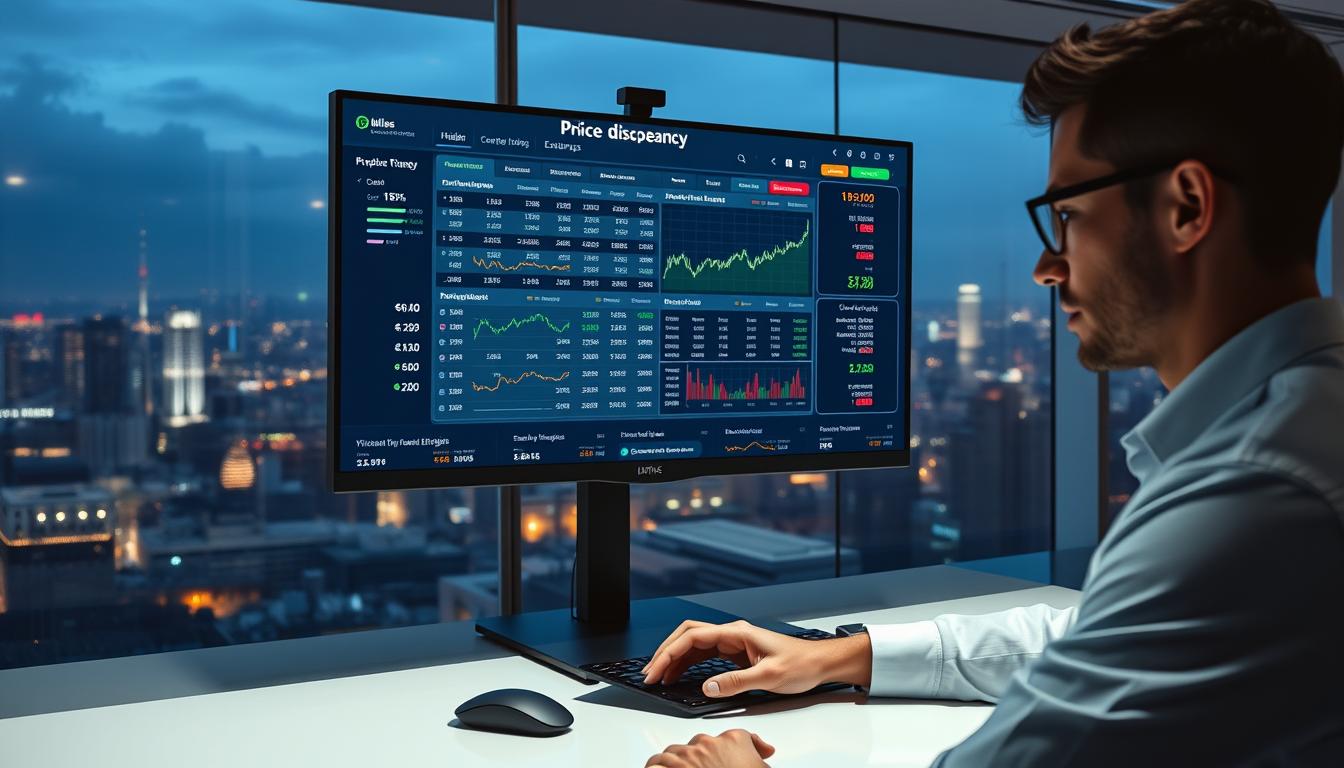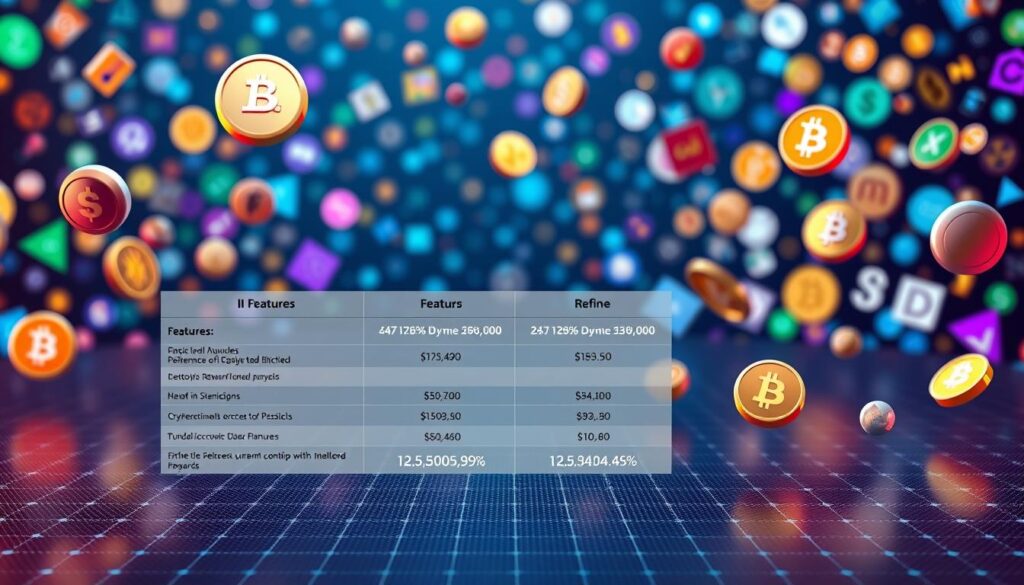Now Reading: Understanding Crypto Arbitrage Trading Opportunities
- 01
Understanding Crypto Arbitrage Trading Opportunities
Understanding Crypto Arbitrage Trading Opportunities
Digital asset markets often show surprising price gaps across platforms. Savvy investors can leverage these differences through a method called arbitrage, which involves buying low on one exchange and selling high on another. This approach thrives in fast-paced environments where temporary imbalances create profit potential.

Price variations between exchanges stem from factors like liquidity differences and regional demand. For example, a digital coin might briefly cost less on a European platform than a U.S.-based one. Quick-thinking individuals can capitalize on these moments before markets adjust.
Global exchange networks intensify these opportunities. With hundreds of platforms operating worldwide, supply and demand rarely sync perfectly. The strategy’s appeal lies in its risk management—success depends on execution speed rather than market predictions.
Key Takeaways
- Price differences across exchanges create profit potential through strategic buying and selling
- Market inefficiencies arise from varying liquidity and regional demand factors
- Successful execution relies on speed and precise timing rather than market forecasts
- Global exchange networks amplify opportunities due to fragmented pricing
- This approach offers a calculated way to benefit from temporary price imbalances
Introduction to the World of Crypto Arbitrage
Global digital asset platforms rarely move in perfect sync. This disconnect creates temporary price gaps that savvy participants can exploit. Unlike traditional finance, these markets operate without centralized oversight, allowing unique conditions for strategic action.

Overview of Market Inefficiencies
Fragmented liquidity plays a key role in price variations. High-volume exchanges often stabilize values faster than smaller platforms. Regional demand spikes in one country might not immediately affect prices elsewhere, leaving windows for quick adjustments.
Supply imbalances further amplify discrepancies. When large sell orders flood one platform, prices dip locally while remaining stable elsewhere. Simultaneous buy surges create the opposite effect. These mismatches often last minutes – sometimes seconds – before automated systems correct them.
Geographical factors add another layer. Time zone differences and local regulations influence trading patterns. A platform in Asia might see midday activity spike while European markets sleep, creating temporary valuation gaps.
Whale activities introduce sudden price swings. A single large transaction can distort values on low-liquidity exchanges. Observant traders monitor order books to spot these artificial dips or peaks before markets self-correct.
The nonstop nature of digital asset markets means opportunities never pause. Unlike stock exchanges with fixed hours, these platforms enable 24/7 monitoring and execution. This constant activity demands both vigilance and precision from participants.
Crypto Arbitrage Trading: Strategies for Success
Mastering market imbalances requires understanding core mechanics and strategic execution. The foundation lies in exploiting temporary valuation gaps through synchronized actions across platforms.

Key Principles Behind Profit Capture
Successful operations hinge on three pillars: speed, fee calculation, and system reliability. Transactions must occur faster than market corrections – often within milliseconds. Advanced algorithms scan multiple platforms simultaneously, flagging mismatches in real time.
Profit formulas account for hidden costs. Transfer fees, withdrawal limits, and network congestion eat into margins. Traders use spreadsheets or specialized software to calculate net gains before executing orders.
Spotting Platform-Specific Value Gaps
Vigilant monitoring tools track price movements across 20+ exchanges. Platforms with lower liquidity often show wider spreads during volatile periods. Seasonal patterns emerge – Asian markets frequently display different valuations during peak trading hours compared to European counterparts.
Maintaining pre-funded accounts on multiple exchanges proves critical. This eliminates transfer delays when capitalizing on fleeting opportunities. Those who explore crypto arbitrage opportunities through services like specialized platforms often achieve better consistency.
Automated systems provide distinct advantages. They execute predefined protocols without emotional interference, locking profits during chaotic market swings. However, human oversight remains essential for adjusting parameters as market conditions evolve.
Leveraging AI and Automation in Arbitrage
Modern markets demand solutions faster than human reflexes can deliver. Artificial intelligence reshapes how participants interact with price discrepancies, offering tools that operate at unprecedented scales.
Benefits of AI-Driven Trading
Machine learning systems analyze thousands of data points across global exchanges in real time. These algorithms detect patterns invisible to manual analysis, identifying profitable gaps before they vanish. Key advantages include:
- 24/7 market surveillance across time zones
- Millisecond response times for trade execution
- Simultaneous management of hundreds of asset pairs
Platforms powered by advanced machine-learning systems – like those discussed here – overcome human limitations. They process order book data, fee structures, and network latency factors in unified calculations.
Addressing Execution and Transaction Challenges
While automation boosts efficiency, obstacles remain. Transfer fees between exchanges can erase slim margins. Network congestion sometimes delays confirmations, turning potential gains into losses.
Successful strategies account for:
- Pre-funding accounts on multiple platforms
- Dynamic fee calculation during decision cycles
- Real-time adjustment for market volatility
Scalability becomes critical. Systems must handle increased transaction volumes without performance drops. High capital requirements further emphasize the need for precision – small percentage gains only compound meaningfully with large investments.
Exploring Different Types of Crypto Arbitrage
Market participants employ multiple approaches to capitalize on fleeting price variations. Each method targets specific market conditions, requiring distinct tools and execution speeds. Understanding these differences helps traders select strategies aligned with their resources and risk tolerance.

Cross-Exchange and Intra-Exchange Techniques
Cross-platform strategies involve purchasing assets on one exchange while simultaneously selling them elsewhere. This demands real-time price tracking across multiple platforms and pre-funded accounts to bypass transfer delays. Success hinges on identifying gaps before automated systems correct them.
Intra-exchange methods focus on discrepancies within a single platform. Traders might convert Bitcoin to Ethereum, then to Litecoin, and back to Bitcoin if exchange rates create profit potential. These opportunities often vanish within seconds, requiring algorithmic execution.
Triangular and Statistical Arbitrage Explained
Triangular approaches exploit inconsistencies between three currencies. For example, a trader might use Bitcoin/Ethereum and Ethereum/Litecoin pairs to benefit from misaligned pricing. This complex method relies on precise calculations to ensure profitable cycles.
Statistical models analyze historical patterns to predict short-term price movements. These systems track correlated assets like Bitcoin and Ethereum, betting on temporary divergences from their usual relationship. Key components include:
- Mean reversion principles
- Real-time data feeds
- Automated trade triggers
Advanced practitioners combine these methods, using machine learning to adapt to shifting market dynamics. The most effective strategies balance speed, accuracy, and cost management.
Building a Step-by-Step Trading Strategy
Building a profitable approach requires transforming market observations into actionable steps. A systematic plan combines statistical analysis with real-time execution, turning fleeting opportunities into consistent results.
Developing Your Data-Driven Trading Plan
Start by gathering historical price data for selected asset pairs. Focus on relationships where prices typically move together. Correlation coefficients above 0.7 indicate strong candidates for mean-reversion tactics.
Calculate Z-scores to spot unusual price spreads. Values beyond ±2 standard deviations often signal actionable gaps. This metric helps define precise entry and exit points while filtering market noise.
- Identify reliable exchanges with high liquidity and low fees
- Establish rules for position sizing based on account balance
- Simulate trades using 6-12 months of historical data
- Adjust thresholds based on backtest success rates
Backtesting reveals strategy weaknesses before real funds are risked. Analyze win rates and profit factors across different market conditions. Successful models maintain a 2:1 reward-to-risk ratio or better.
Continuous refinement separates sustainable plans from temporary fixes. Update parameters quarterly as market volatility shifts. Track performance metrics like maximum drawdown and Sharpe ratio to gauge improvements.
Effective Risk Management in Volatile Markets
Thin profit margins demand meticulous planning to avoid hidden costs derailing potential gains. Every transfer, trade, and withdrawal carries fees that compound quickly across multiple transactions. Savvy participants prioritize platforms with transparent fee structures and lightning-fast execution times.
Minimizing Transaction Costs and Delays
Fee comparison tools help identify exchanges with competitive rates. Network congestion during peak hours often increases transfer times – experienced traders schedule activities during calmer periods. Three cost-cutting tactics prove essential:
- Negotiate volume-based fee discounts with platforms
- Use stablecoins to avoid conversion charges
- Batch transactions to reduce per-trade costs
Implementing Stop-Loss Orders and Position Sizing
Automated safeguards prevent minor setbacks from becoming major losses. Set stop-loss thresholds at 1-2% below entry points for short-term plays. Capital allocation follows a simple formula:
- Determine acceptable risk per trade (usually 0.5-2% of total funds)
- Calculate position size using entry and stop-loss prices
- Adjust for platform-specific liquidity constraints
Diversification across 5-7 asset pairs reduces reliance on single opportunities. This approach balances exposure while maintaining manageable oversight demands.
Harnessing Real-Time Data and Analysis Tools
Instant data access separates successful strategies from missed opportunities. Modern markets move at speeds demanding millisecond-level responses, where delays erase profit potential. Specialized software now bridges this gap, scanning global exchanges to pinpoint actionable disparities.
Optimizing Platform Selection Through Analytics
Effective execution starts with choosing platforms offering robust APIs and transparent fee structures. Tools like heatmaps visualize liquidity patterns across exchanges, highlighting venues with frequent imbalances. This approach reduces guesswork when capitalizing on short-lived valuation differences.
Custom dashboards track multiple metrics simultaneously. Volume spikes, order book depth, and historical spread data combine to forecast potential gaps. Some systems integrate with advanced derivatives strategies, creating hybrid approaches for complex market conditions.
Latency monitoring proves critical. Even 500-millisecond delays can turn profitable trades into losses during volatility. Savvy operators prioritize exchanges with colocation services and low-latency connections.
Human oversight remains vital despite automation. Traders review anomaly detection logs to refine algorithms and avoid false signals. This balance between speed and scrutiny defines modern market navigation.
FAQ
What causes price differences between cryptocurrency exchanges?
Variations in liquidity, regional demand, trading volumes, and exchange-specific fees create gaps in asset pricing. Platforms like Binance or Kraken may show disparities due to delayed market reactions or temporary supply imbalances.
How do traders identify profitable opportunities across markets?
Advanced tools like CoinGecko or TradingView track real-time prices globally. Traders monitor order books, historical patterns, and latency gaps to spot mispriced assets before markets correct.
Why is speed critical in executing these strategies?
Price gaps often close within seconds. Automated bots from services like ArbitrageScanner enable faster trade execution than manual methods, reducing slippage and maximizing returns.
What risks are associated with cross-exchange techniques?
Transfer delays, withdrawal limits, and sudden fee changes can erase profits. Platforms such as Coinbase Pro enforce transaction minimums, requiring careful cost-benefit analysis before trading.
How does triangular arbitrage work within a single platform?
Traders exploit pricing inconsistencies among three currency pairs (e.g., BTC/ETH, ETH/USDT, BTC/USDT) on exchanges like KuCoin. Profits come from cyclical trades without transferring funds externally.
Can beginners manage transaction costs effectively?
Yes. Using tiered fee structures on Bitstamp or Bybit and optimizing trade sizes reduces expenses. Tools like CryptoCompare help compare rates across venues to prioritize low-cost options.
What role do APIs play in automated systems?
APIs from CoinMarketCap or CoinAPI feed real-time data into custom algorithms. This integration allows instant decision-making, balancing speed and accuracy in volatile conditions.
Are stop-loss orders useful in these strategies?
Absolutely. Platforms like Kraken Futures let traders set dynamic stop-loss levels, capping potential losses if prices shift unexpectedly during arbitrage windows.















